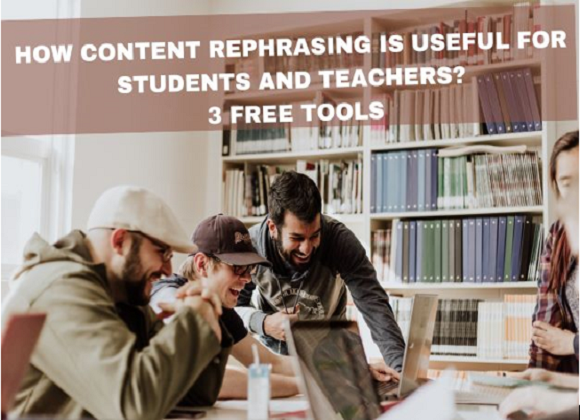Courses
Grow skills with quality courses
Introduction
I am using here a lesson that I experienced as a student. This is in grade 9 Maths class in a CBSE school, (Central Board of Secondary Education. (n.d.)) in New Delhi, India. The teacher, a short lady with a polite voice, taught using the board, chalk and textbook.
She would explain a concept using the board, solve a few examples and then assign problems to us that we were to solve individually. In case of a doubt, we could call upon her. We were not encouraged to talk to each other as that created noise and the head of school did not appreciate it. Since she was a calm person, we were also calm and did not feel threatened by her or the subject. It was slow and steady work in a pleasant atmosphere. Concept of Maths-Problems-Assessment: This was the cycle that repeated.
Main text
The classroom elicits a positive “emotional response” because of the warm temperament of the teacher; but there is no “meaning” (Sun Protection Outreach by Students, p7) for the content that students are learning for it Maths can be too abstract. Hence many students are losing interest in Maths.
I would suggest these 2 strategies for the teacher:
Strategy 1 – Think-Pair-Share
The teacher can add emotions to learning Maths concepts by using “Think-Pair-Share” (Sun Protection Outreach by Students, p8).
“Think-pair-share (TPS) is a collaborative learning strategy where students work together to solve a problem or answer a question about an assigned reading. This strategy requires students to (1) think individually about a topic or answer a question; and (2) share ideas with classmates. Discussing with a partner maximizes participation, focuses attention and engages students in comprehending the reading material”. (Think-Pair-Share: Classroom Strategy, 2017).
Adolescents have a “Preference for being with peers”, Armstrong, T. (2016). Everyone in this class does not learn the way the teacher is teaching but are too afraid to ask the teacher. “Something as simple as being called on to answer a question or asked to read aloud can produce a threatening situation for some students.”(Sun Protection Outreach by Students, p8). A TPS set-up can give space for the students who were afraid to ask openly an “emotionally safe learning environment”, EmotionalSafety. (2019, July 25), to ask their doubts to peers.
A limitation of this strategy is that “Not all students focus on the topic given, because they can share everything with their partner out of the topic (question) given.” (Yulianingsih, 2019). Since the number of students is large, the teacher may not be able to ensure that all students are learning.
The challenge for the teacher thought would be noise and possible indiscipline from a few students. She is a single teacher managing 45 students and might not be able to control the learning environment. Add to that the displeasure of the head of school in the environment of a school that was not progressive, she may not be able to find the confidence to try something new. “It's possible to fall into comfortable routines in teaching because we get a feel for what works.” (Astbury, 2017) The teacher, working in a non-encouraging environment, appears to have fallen into the comfort cycle of Concept of Maths-Problems-Assessment.
Strategy 2 – Visuals
“We take in more information visually than through any other sense”. (Armstrong, p8). A lot of work by the teacher is visual, on the blackboard using white chalk. And students work in the notebook using a blue ink pen. A lot of Maths content needs to be memorized.
She could use graphics to organize content visually and teach her students too. She could also colour chalks on the board and allow her students to use 2 more colours to underline or beautify the notebook using colours. She could teach students to organize the information using mind maps so they could be retained better. She could also have a project involving Maths and cartoons!
However, this involves stretching the timetable till the students have mastery over the content. I am not sure if her existing timetable would allow her to do this, where she is under a strict timeline to finish the content. The head of the Maths department watches it like a hawk and the head of school listens to the head of the department. The teacher does not have the freedom to innovate.
The school is also a low budget Government school and may not have the budget for colour chalks. The students also are not from families where they can buy colour pens. The mindset of the social set-up does not believe in such experiments. The teacher has a huge challenge to face this even if she uses her own money to buy such material (which many do in Indian rural schools).
Conclusion
Even though the teacher had 45 students in her class, by judicious use of ‘Think-Pair-Share’ and ‘Visuals’ she could have livened up the lesson in a way that more students would have found it appealing to learn. That way she would have improved her results too, which was the chief aim of the school. However, she would need the space to innovate by the school for the same.
“…it’s time we trust teachers to lead the way in transforming their classrooms into bastions of creativity and wonder.” (Spencer, 2019)
About the author
 |
Monica Kochar started her career as a Maths teacher in 1993. She has years of experience as a Maths Curriculum Designer with leading education platforms. This write-up has been reproduced from ' Humane Maths ' with the Author's consent. Any views expressed are personal.
|
Comments
Recommended by Gurushala

Technology & Innovation
-By Valentina MilanovaHow Content Rephrasing is Useful for Students and Teachers? 3 Free Tools

Stories of Indian Classrooms
-By GurushalaOn the course of continuous learning- An inspiring teacher story from Pune
Related Articles
